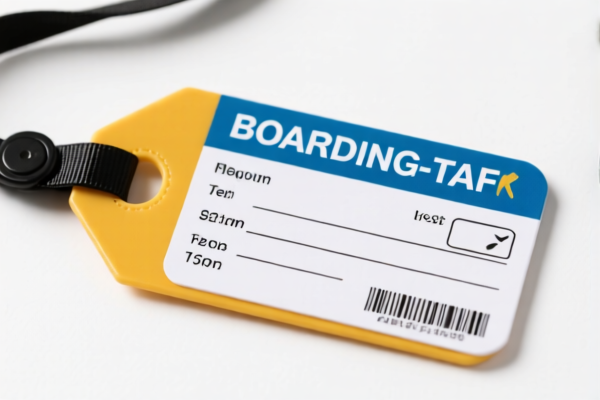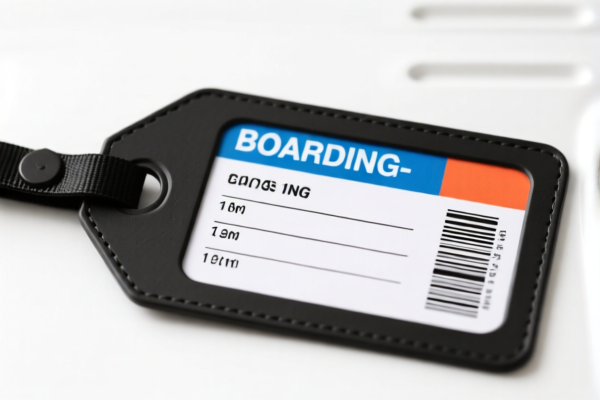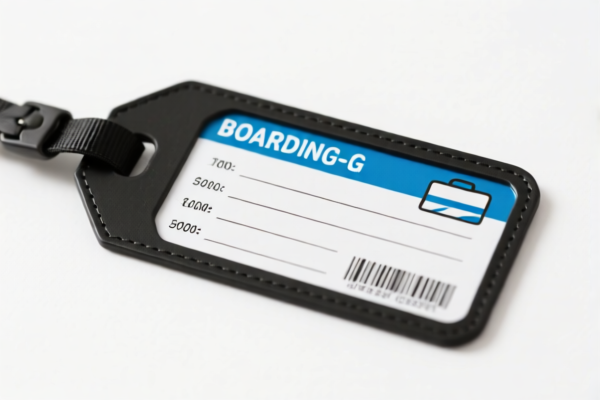| HS Code | Official Doc | Tariff Rate | Origin | Destination | Effective Date |
|---|---|---|---|---|---|
| 4823901000 | Doc | 55.0% | CN | US | 2025-05-12 |
| 3923900080 | Doc | 58.0% | CN | US | 2025-05-12 |
| 4202995000 | Doc | 62.8% | CN | US | 2025-05-12 |
| 7326903500 | Doc | 87.8% | CN | US | 2025-05-12 |
| 5404900000 | Doc | 55.0% | CN | US | 2025-05-12 |
| 5405006000 | Doc | 60.8% | CN | US | 2025-05-12 |
| 5609004000 | Doc | 58.9% | CN | US | 2025-05-12 |




Okay, let's break down the HS codes and tax implications for your "LUGGAGE TAG BOARDING TAG" declaration. Here's a detailed analysis, structured for clarity:
Understanding HS Codes: A Quick Primer
HS codes (Harmonized System codes) are internationally standardized product codes used for customs classification. The first two digits generally indicate the chapter, the next two the subheading, and further digits provide more specific details. Here's how to interpret them in your case:
- Chapter 48: Paper, paperboard, cellulose wadding and webs of cellulose fibers.
- Chapter 39: Plastics and articles thereof.
- Chapter 42: Articles of leather, travel goods, handbags, etc.
- Chapter 54: Synthetic filaments.
- Chapter 56: Wadding, felt, nonwoven fabrics; twine, cordage, rope, cables.
- Chapter 73: Articles of iron or steel.
Detailed HS Code Analysis & Tax Breakdown
Here's a breakdown of each HS code you provided, with explanations and recommendations:
-
HS Code: 4823.90.10.00 – Other paper, paperboard… Of paper pulp
- Meaning: This code covers paper or paperboard articles (like tags) made from paper pulp.
- Tax: Base Tariff: 0.0%, Additional Tariff: 25.0%, Total: 55.0% (post April 2, 2025: 30% additional tariff, total 55.0%).
- Recommendation: Confirm the exact composition – is it entirely paper pulp? Any coatings or laminations could shift the classification.
-
HS Code: 3923.90.00.80 – Articles for the conveyance or packing of goods, of plastics… Other Other
- Meaning: This code is for plastic tags or components used for packaging or conveyance.
- Tax: Base Tariff: 3.0%, Additional Tariff: 25.0%, Total: 58.0% (post April 2, 2025: 30% additional tariff, total 58.0%).
- Recommendation: Specify the type of plastic used. Different plastics may have slightly different tariff treatments.
-
HS Code: 4202.99.50.00 – Trunks, suitcases… Other: Other: Of materials (other than leather…) wholly or mainly covered with paper
- Meaning: This code covers travel goods (like tags) made of various materials covered with paper.
- Tax: Base Tariff: 7.8%, Additional Tariff: 25.0%, Total: 62.8% (post April 2, 2025: 30% additional tariff, total 62.8%).
- Recommendation: If the paper covering is substantial, this code is likely appropriate. However, if the underlying material is dominant, another code might be more accurate.
-
HS Code: 7326.90.35.00 – Other articles of iron or steel… Containers of a kind normally carried on the person
- Meaning: This code covers metal tags or containers designed to be carried on a person.
- Tax: Base Tariff: 7.8%, Additional Tariff: 25.0%, Total: 87.8% (post April 2, 2025: 30% additional tariff, total 87.8%).
- Recommendation: Confirm the metal composition (steel, aluminum, etc.). The additional tariff on steel/aluminum is significant.
-
HS Code: 5404.90.00.00 – Synthetic monofilament… Other
- Meaning: This code covers synthetic filaments used in tags.
- Tax: Base Tariff: 0.0%, Additional Tariff: 25.0%, Total: 55.0% (post April 2, 2025: 30% additional tariff, total 55.0%).
-
HS Code: 5405.00.60.00 – Artificial monofilament… Other
- Meaning: This code covers artificial filaments used in tags.
- Tax: Base Tariff: 5.8%, Additional Tariff: 25.0%, Total: 60.8% (post April 2, 2025: 30% additional tariff, total 60.8%).
-
HS Code: 5609.00.40.00 – Articles of yarn, strip… Other
- Meaning: This code covers articles made from yarn or strip, like tags.
- Tax: Base Tariff: 3.9%, Additional Tariff: 25.0%, Total: 58.9% (post April 2, 2025: 30% additional tariff, total 58.9%).
Important Considerations & Recommendations:
- Material Composition is Key: The exact materials used in your luggage tags are crucial for accurate classification. Provide detailed specifications.
- April 2, 2025 Tariff Changes: Be aware of the upcoming tariff increases.
- Combined Materials: If your tags are made of multiple materials, the classification can be complex. The material that gives the tag its essential character will determine the HS code.
- Certifications: Depending on the materials used, you might need certifications (e.g., for recycled content, safety standards).
- Single Declaration: Consider if you can declare all components under a single HS code if they are functionally related.
Disclaimer: I am an AI and cannot provide definitive customs rulings. This information is for general guidance only. It is highly recommended to consult with a licensed customs broker or the relevant customs authority for a specific classification ruling.
Customer Reviews
The HS Code 7326903500 with 87.8% tariff caught me off guard. The page could have mentioned the high cost earlier.
The detailed explanation of HS Code 4202995000 and its 62.8% tariff made it easy to classify my paper-covered tags. Highly useful!
The plastic luggage tag HS code 3923900080 was exactly what I needed. The 58% tariff is a bit steep, but the info was accurate.
Clear breakdown of HS Code 4823901000 and its 55% tariff rate. Great for understanding paper-based luggage tags.